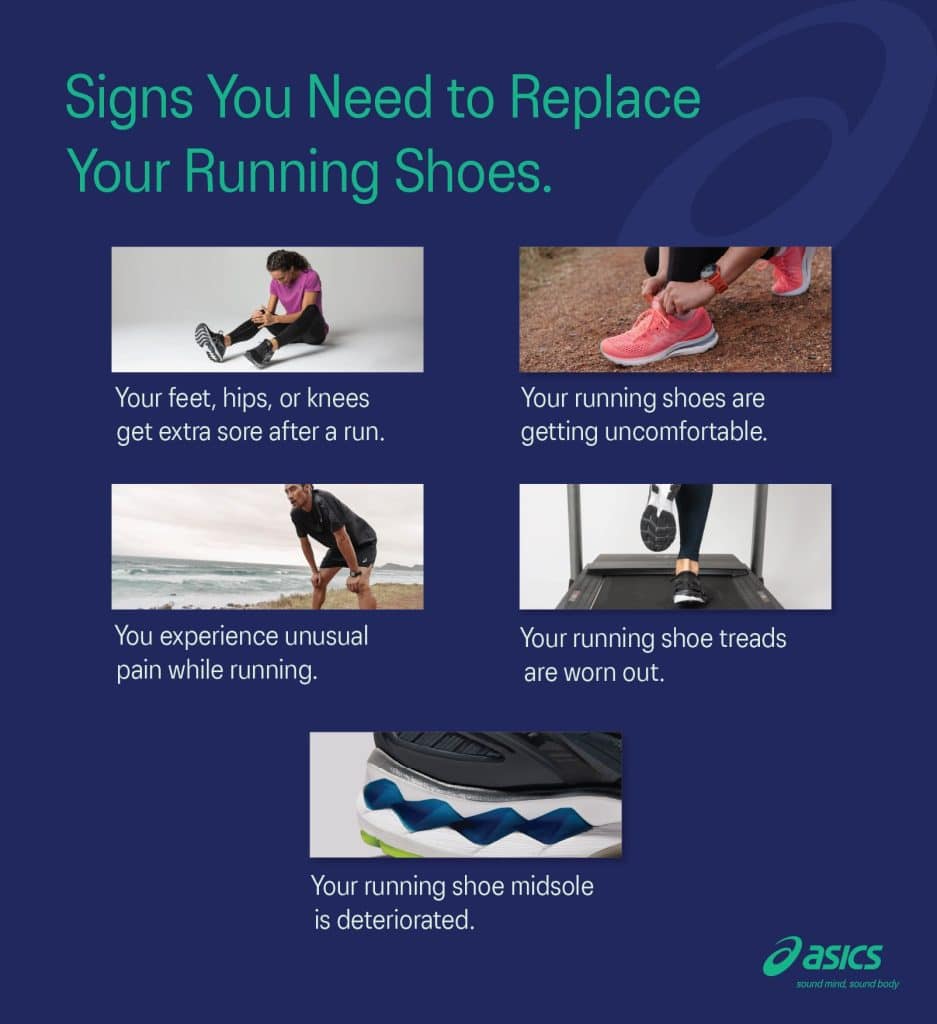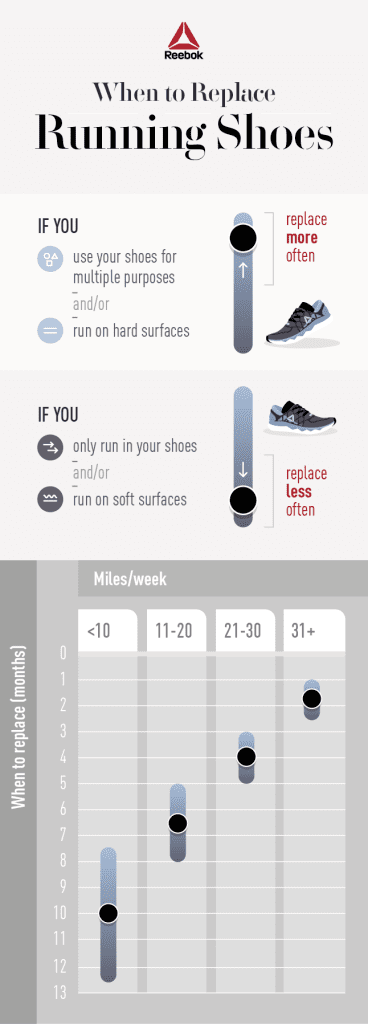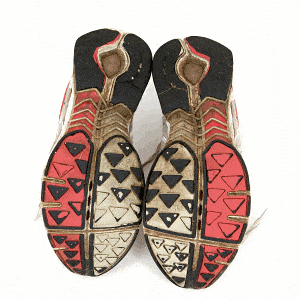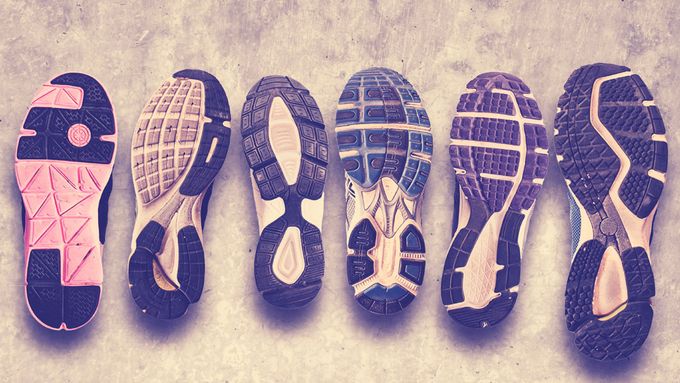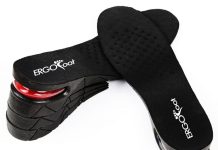Are your running shoes starting to feel worn out and less supportive? If so, it may be time to consider replacing them.
In this article, we will explore the question that all runners ask themselves: How often should I replace my running shoes?
Find out the key factors that determine the lifespan of your footwear and discover helpful tips to ensure you are running in the right pair of shoes to keep you comfortable and injury-free.
Factors to Consider
When it comes to determining when to replace your running shoes, you should consider several factors. The following factors are essential to determine the lifespan of your shoes and when it’s time to invest in a new pair.
Running Frequency
One of the critical factors to consider is your running frequency. How often do you lace up your sneakers and hit the pavement? This can vary significantly from person to person. Some individuals are dedicated daily runners, while others may only run several times a week or participate in occasional jogs.
Mileage
Another crucial factor is the mileage you put on your running shoes. The distance you cover with each run plays a significant role in the wear and tear on your footwear. It’s essential to be mindful of the recommended mileage threshold for your specific shoe model and take note of factors that may affect its durability.
Surface Type
The type of surface you run on can also impact the lifespan of your running shoes. Different terrains place varying levels of stress and strain on your footwear. Whether you primarily run on roads, trails, tracks, or even treadmills, it’s essential to consider the specific demands of each surface type.
Running Style
Your running style, or how your feet and legs move as you run, is another essential factor to consider when determining the lifespan of your running shoes. Two critical aspects of running style to consider are foot strike and pronation.
Shoe Quality
Lastly, the quality of your running shoes will also affect their lifespan. Investing in high-quality shoes will give you excellent durability and longevity. However, there are also mid-range options available that provide a good balance between quality and cost. Additionally, budget-friendly options can be suitable for those just starting or with more limited financial resources.
Signs it’s Time for Replacement
Now that we have considered the various factors that can influence the lifespan of your running shoes let’s explore the signs that indicate it’s time for a replacement.
Worn-Out Soles
One of the most noticeable signs that your running shoes need to be replaced is worn-out soles. Over time, the constant impact of your feet hitting the ground can cause the outsole of your shoes to become worn down. If you notice that the treads on your shoes are significantly flattened or there are visible signs of wear on the outsole, it’s clear that it’s time for a new pair.
Decreased Cushioning
Another sign that your running shoes may be past their prime is decreased cushioning. The midsole of your shoes provides cushioning and shock absorption, which can wear down over time. If you notice that your shoes feel less responsive or are experiencing more impact-related discomfort during your runs, it’s likely time to invest in a new pair.
Visible Damage
Visible damage to your running shoes is an obvious sign that they must be replaced. This can include holes, tears, or significant wear and tear on the upper portion of the shoe. Not only can visible damage affect the overall integrity and support of your shoes, but it can also increase the risk of injury during your runs.
Poor Fit
If your running shoes no longer fit properly, it’s a clear sign that it’s time for a replacement. Over time, the materials and structure of the shoe can break down, causing it to lose its shape and ability to provide a snug and supportive fit. If you notice that your shoes feel loose, your feet slide around inside them, or you develop blisters or hot spots, it’s essential to find a new pair that fits properly.
Increased Pain or Discomfort
Perhaps one of the most telling signs that it’s time to replace your running shoes is increased pain or discomfort during your runs. Suppose you’re experiencing more aches, pains, or injuries after lacing up your old pair. In that case, it strongly indicates that they no longer provide adequate support and cushioning. Investing in a new pair of shoes can help alleviate this discomfort and reduce the risk of further injury.
Running Frequency
Now that we’ve discussed the main factors to consider when determining the lifespan of your running shoes let’s dive deeper into each one, starting with running frequency.
Daily Runners
For those who run daily, it’s essential to monitor the condition of your running shoes. Daily runners put a significant amount of wear and tear on their footwear, so it’s crucial to invest in high-quality shoes that can withstand the demands of daily use. Additionally, frequent runners may need to replace their shoes more often to maintain optimal support and cushioning.
Several Times a Week
If you run several times a week, you still need to be mindful of the lifespan of your running shoes. Even with a slightly lower frequency, the accumulative impact of your runs can still take a toll on your footwear. Assessing the signs of wear and tear and closely monitoring your shoes’ condition will help determine when it’s time for a replacement.
Occasional Joggers
For occasional joggers who only lace up their running shoes now and then, the lifespan of your shoes may be extended. However, it’s still important to watch for any signs of wear and tear. While you may not need to replace your shoes as frequently as daily runners, ensuring they are in good condition to provide adequate support and cushioning is still essential.
Mileage
In addition to your running frequency, the mileage you accumulate with each run also significantly determines when to replace your running shoes.
Recommended Mileage Threshold
Most running shoe manufacturers provide a recommended mileage threshold for their shoes. This threshold typically ranges from 300 to 500 miles. It’s essential to pay attention to this guideline as it serves as a general indicator of when the materials in your shoes may start to break down and the shoe’s support and cushioning may diminish.
Factors Affecting Durability
It’s worth noting that the recommended mileage threshold is just a rough estimate and can vary depending on several factors. Your body weight, running form, and the type of surface you run on can all affect the durability of your shoes. Individuals who are heavier or have a more aggressive running style may find that their shoes wear out more quickly. Similarly, running on more complex surfaces like concrete can cause more excellent wear on shoes than softer surfaces like trails.
Surface Type
The surface you primarily run on is another important consideration regarding the lifespan of your running shoes. Different surfaces place varying levels of stress on the shoes.
Road Running
If you primarily run on roads, the repetitive impact of your feet hitting the hard pavement can cause accelerated wear on the outsole of your shoes. The constant friction and pounding can lead to faster wear and tear, making it essential to monitor the condition of your shoes more closely.
Trail Running
Trail running introduces a different set of challenges for your footwear. Uneven terrain, rocks, roots, and other obstacles can increase your shoes’ stress. Look for trail running shoes specifically designed to handle the rugged demands of off-road running. These shoes often have more durable outsoles and enhanced protection to withstand the rigors of trail running.
Track Running
Track running generally involves softer surfaces, such as synthetic or rubberized tracks. These surfaces are less abrasive than roads and can be more forgiving on your shoes. While your shoes may last longer on the track than road running, monitoring the signs of wear and tear and replacing them when necessary is still essential.
Treadmill Running
Running on a treadmill is the most forgiving of wear and tear on your shoes. Since the surface is cushioned, it places less stress on the shoes than outdoor running. However, it’s still necessary to assess the condition of your shoes regularly, as the constant friction can still cause wear and decrease overall support and cushioning.
Running Style
Your running style, particularly foot strike, and pronation, plays a vital role in determining the lifespan of your running shoes.
Foot Strike
Foot strike refers to how your foot first makes contact with the ground when running. There are three main types of foot strikes: heel, midfoot, and forefoot. Each foot strike places stress on your shoes and affects the wear patterns.
- Heel Strike: When your heel lands first, it absorbs the initial impact. Running shoes with extra cushioning in the heel area can help absorb the shock and extend the lifespan of your shoes.
- Midfoot Strike: The midfoot strike distributes the impact evenly along your foot. It places less stress on specific areas of the shoe, which can potentially result in increased durability.
- Forefoot Strike: When landing on the forefoot, the impact is shifted to the front of the foot. Shoes with extra cushioning in the forefoot area can help protect your feet and extend the shoe’s life.
Pronation
Pronation refers to the natural inward rolling motion of the foot as it strikes the ground. There are three primary pronation types: neutral, overpronation, and supination.
- Neutral Pronation: Neutral pronation occurs when the foot rolls slightly inward upon landing, ensuring proper impact distribution. Choosing shoes with adequate arch support and cushioning can help prolong the lifespan of your shoes.
- Overpronation: Overpronation happens when the foot excessively rolls inward. This can result in increased stress on specific areas of the shoe. Stability shoes with added support can help address overpronation and ensure the longevity of your footwear.
- Supination: Supination, also known as underpronation, occurs when the foot rolls outward upon landing. This can lead to uneven wear on the outer edges of your shoes. Cushioned shoes with additional shock absorption can help manage supination and extend the lifespan of your shoes.
Understanding your foot strike and pronation can assist you in choosing the right type of shoes that align with your running style and maximize the lifespan of your footwear.
Shoe Quality
The quality of your running shoes plays a significant role in their lifespan. Investing in high-quality shoes designed to withstand the demands of running can provide you with excellent durability and support.
Mid-Range Shoes
Mid-range running shoes strike a balance between price and quality. They offer decent durability, adequate cushioning, and support and are suitable for most runners. While they may not have the advanced features and technologies in high-end shoes, mid-range options can still provide a satisfactory lifespan and performance.
High-End Shoes
High-end running shoes are often equipped with the latest advancements in running shoe technology. They utilize premium materials and innovative designs to offer superior comfort, support, and durability. These shoes are typically more expensive but offer a longer lifespan, enhanced performance, and additional features such as improved breathability and stability.
Budget-Friendly Options
Budget-friendly options are also available if you’re on a budget or just starting with running. While these shoes may not have the same level of durability as higher-priced models, they can still provide adequate support and cushioning for shorter distances or occasional runs. Just be mindful of signs of wear and tear, and be prepared to replace them more frequently.
Worn-Out Soles
Worn-out soles indicate that it’s time to replace your running shoes. The outsole, or the bottom part of the shoe, is responsible for providing traction and durability.
Over time, the constant impact and friction with the ground can cause the treads on the outsole to wear down. If you notice significant flattening of the treads or a loss of grip during your runs, it’s a strong signal that your shoes have reached the end of their lifespan and should be replaced.
Decreased Cushioning
As you accumulate miles in your running shoes, the cushioning in the midsole can start to deteriorate. The midsole provides shock absorption and cushioning for a comfortable and smooth ride. When the cushioning begins to break down, you may notice decreased responsiveness and impact absorption during your runs. If your shoes no longer feel as cushioned as they used to, or you start to experience more discomfort or pain in your feet or joints, it’s a sign that it’s time for a new pair of shoes.
Budget-Friendly Options
Not everyone has the budget to invest in expensive running shoes. Fortunately, there are budget-friendly options available that can still provide you with footwear suitable for running.
Average Lifespan
Budget-friendly running shoes typically have a shorter lifespan compared to higher-priced models. While the materials and construction may not be as durable, they can still withstand frequent use for shorter distances or occasional runs. On average, budget-friendly running shoes may last around 300 to 400 miles, but this can vary depending on your running style and body weight.
Signs of Wear
Despite the lower price point, monitoring the signs of wear and tear on your budget-friendly running shoes is still essential. Look out for worn-out soles, decreased cushioning, visible damage, and poor fit; these all indicate that it’s time for a replacement. Remember to prioritize your comfort and safety over cost savings.
Considerations
When considering budget-friendly running shoes, assessing your needs and requirements is essential. Budget-friendly options can be suitable if you’re starting your running journey or plan to run shorter distances. However, if you’re training for longer distances or have specific foot conditions or pronation issues, investing in higher-quality shoes may be necessary to ensure optimal support and cushioning.
In conclusion, there are several factors to consider when replacing your running shoes. Running frequency, mileage, surface type, running style, and shoe quality all play a role in the lifespan of your footwear.
By actively monitoring the signs of wear and tear and being attentive to changes in fit, cushioning, and overall comfort, you can ensure that you’re always running in shoes that provide the necessary support and protection. Remember that investing in the right pair of running shoes is an investment in your comfort, performance, and overall running experience.


